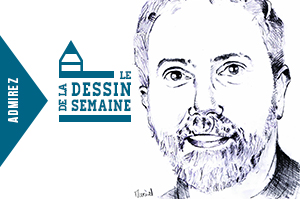
Credit: Mick Nolan
During the last Finnish legislative elections on April 19, 2015, the universal basic income was acclaimed by those of the Finnish population that see it as a way to fight against poverty and bureaucracy while encouraging entrepreneurship. The installation of a universal basic income corresponds to a need shared more and more by developed countries: between globalization and workflow automation, paid employment seems less of a sure thing to some parts of the population. This is the case in Finland with an unemployment rate which reached 9.2% in December 2015, the highest rate since 2003. This fixed income allows people who cannot work, or are not wanting to anymore, to support themselves.
What about the rest of the story?
The automation in manufacturing and the reduction in working hours caused by the universal basic income are not new ideas. It was noticed in the early 19th century in England with the first industrial revolution marked by the introduction of steam machines, tilling machines, knitting machines and the protest by the luddites. Illegal workers from this movement fought against the mechanization of their work by breaking the machines that replaced them.
Owners saw manufacturing automation as a way to ensure high productivity while maintaining low operating costs. It has therefore continued during the successive industrial revolutions and has today reached a new level. With the decrease in marginal production cost and the possibility to produce your own objects – through 3D printing especially – the British politician Jeremy Corbyn thinks that we are at the “eclipse of capitalism”. The Finnish reform can withstand this double phenomenon, and it is therefore more of a spare wheel to capitalism than a real social revolution.
Benefits of universal income
“The universal income is for lazy people ”. This is essentially the cliché conveyed by critics of the reform. Yet anyone who looks at the various testing already put in place will understand the opportunity it represents. An unconditional income has already been introduced in some villages in the Indore district of India. The results showed “a significant increase in spending on food, medicine and education, an increase in savings and debt reduction, as well as home improvement.”
Moreover, the basic income provides the opportunity to unemployed people to invest their time in other volunteer, collaborative or artistic work. This is an opportunity for a part of the population to continue studying or to train for new jobs. It provides security against social isolation that can lead to unemployment.
Universal income? Which universal income?

Several questions remain. Among them are doubts surrounding the definition of basic income. The income in Finland has little to do with the one in Alaska indexed on oil rent, or with the Indian version. Milton Friedman, Michel Foucault, Marx, Jean-Jacques Rousseau – they each defended the idea of a basic income, although their visions were different.
The liberal approach is based on the principle of negative tax. Milton Friedman said that this method was most effective as it was giving money to people who would know better than anyone else what to do with it – and especially better than the State. This version’s popularity has plummeted since the economic crisis in 2008, as well as that of his efficient market hypothesis.
A more social approach towards basic income focuses more on the condition of citizens and the means they have to fight unemployment. The basic income is no longer perceived as a tool for helping the market but as a cure to fix its failures. As a return to full employment in the short term is highly unlikely, it helps to fight against the lowering of living standards and the social and symbolic violence caused by unemployment.
The Marxist approach – close to the previous one – mentioned the advent of a society in which work would be entirely taken over by machines, the only wealth providers. The whole of humanity would no longer be paid to work, and wealth, created mechanically, would be returned in the form of universal benefits.
Universal income or reduction in working hours?
Whether they give money to individuals through the liberal approach or protect market corruption via the Marxist approach, the basic income does not solve the primary problem, which is employment. To characterize, one could even say that it would help maintain a high rate of unemployment, creating “inactive generations”.
Furthermore and paradoxically, the basic income might help widen socio-economic inequalities. With the assurance of a universal allowance, pressure on salaries would be reduced. The Finnish project is no exception to this logic, as the government hopes to encourage people to accept lower-level and less stable jobs more easily - part-time and lower-paid. In this way, the universal income may exacerbate the dominating relationship between employers and employees at the expense of the latter.
In addition, it plays a role in the increasing quantity of money in circulation, one of the latest key factors in the economic crisis. Although it can restore purchasing power to those who lack it, the basic income is part of a consumerist logic clashing with the other great global struggle – environmental protection. It seems increasingly incompatible with the dominant economic ideology that is based on economic growth.
The basic income provides a relative safety regarding extreme poverty. But the amount must match the local cost of living. Indeed, the various Finnish parties are struggling to agree on this point since the Green party would recommend roughly €400 a month, the Labour party €600 a month and the Conservatives €800 to €1,000. Finally, a redesigning of the labour market which would allow everyone to be active without increasing the number of less stable jobs, as observed in the United Kingdom, nor destroying all environmental effort which is an ideal of the growth ideology, seems more and more necessary. A reduction in working hours, or the introduction of a salary for life and not an income – salary is always related to a job, even if it is not connected with employment – could be a good idea.





























